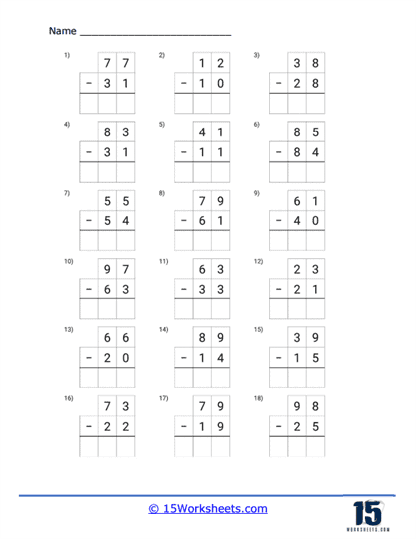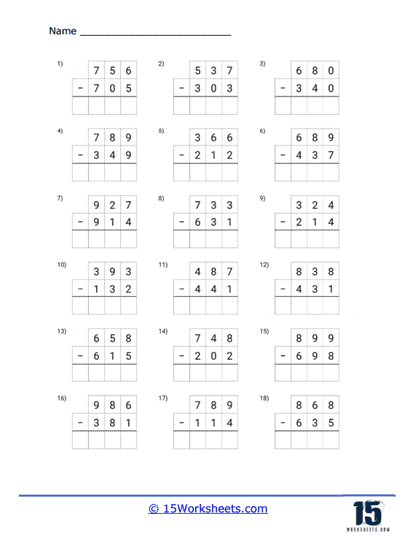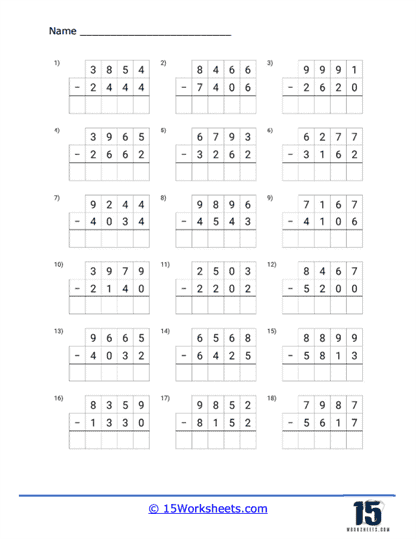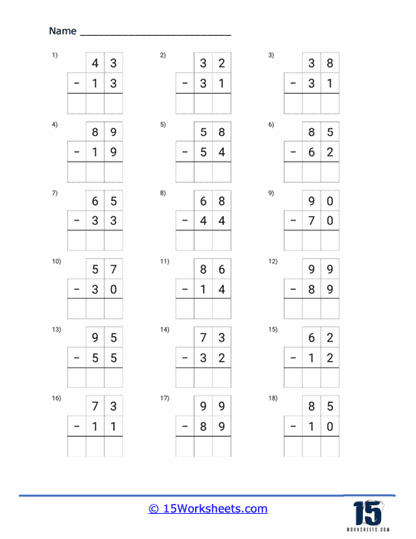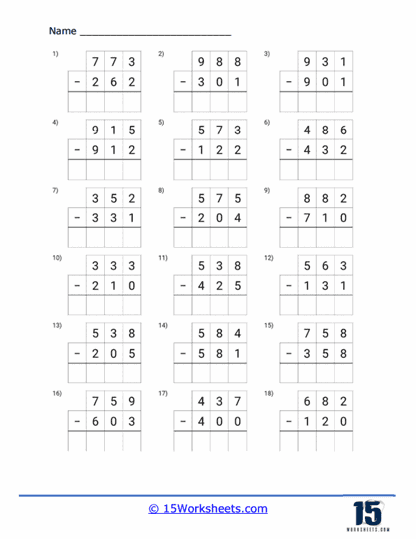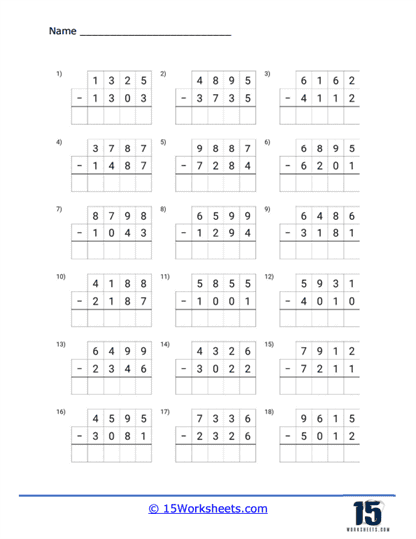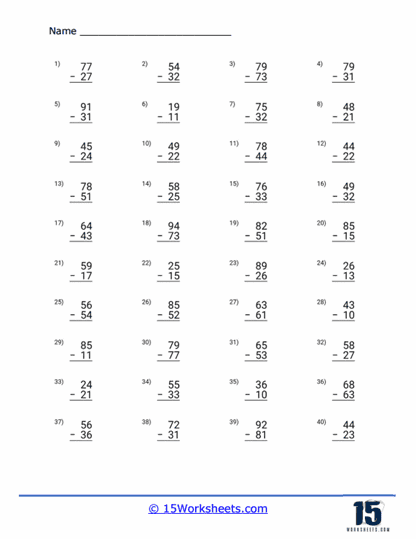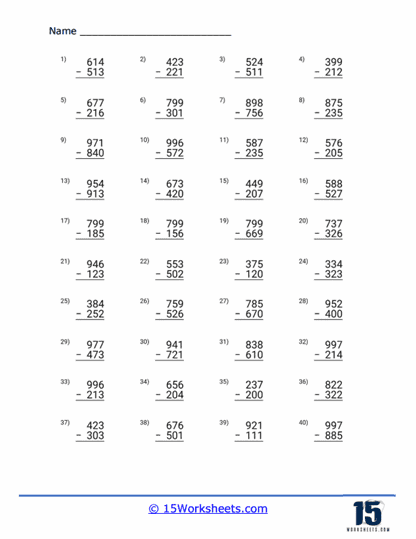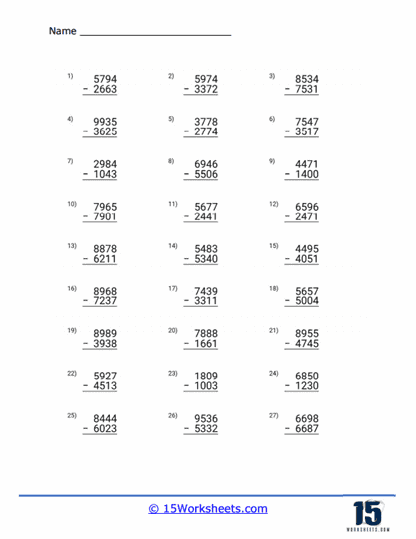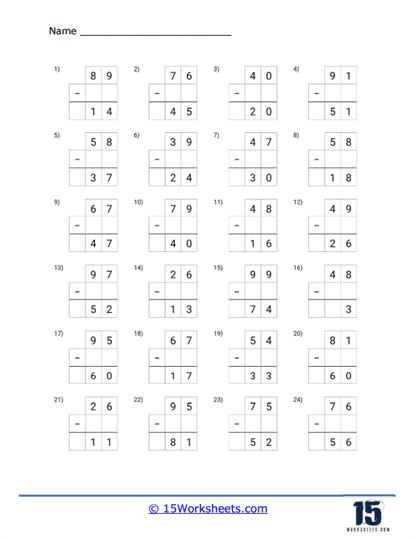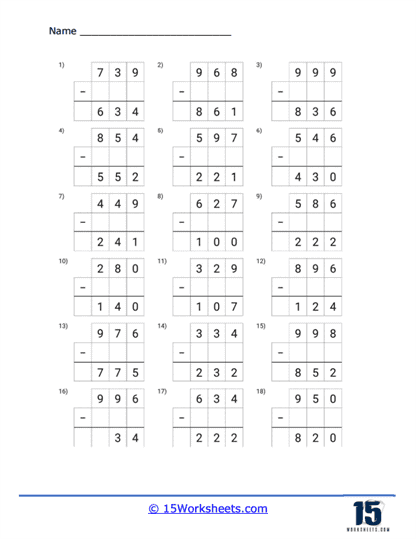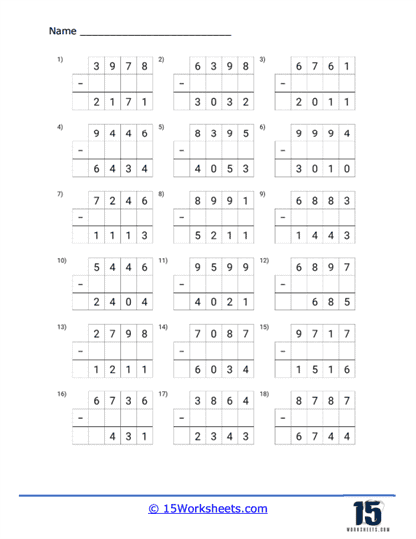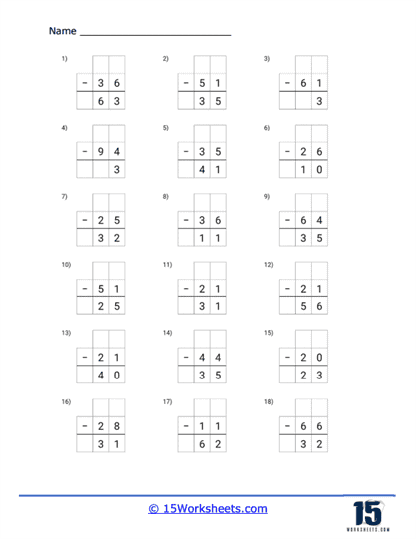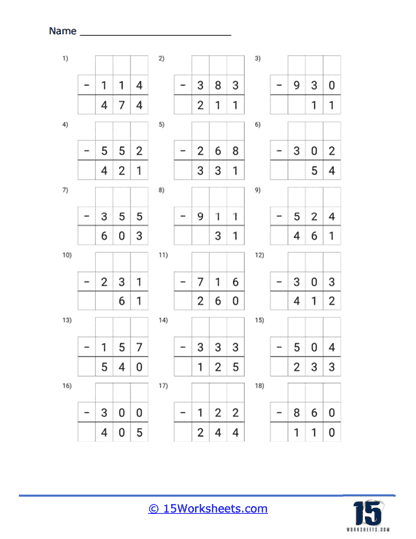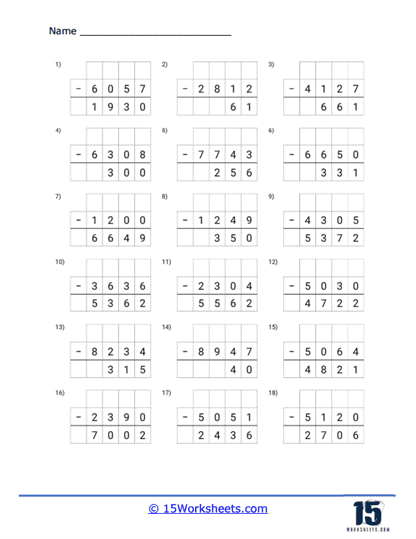No Regrouping Subtraction Worksheets
About These 15 Worksheets
These worksheets will help you get better at subtraction – one of the fundamental operations in math. They provide you with a structured and fun way to practice and perfect your subtraction skills.
But first, let’s understand what ‘No Regrouping’ means. In the world of numbers, ‘regrouping’ is like borrowing from your neighbor when you don’t have enough to subtract. For example, if you try to subtract 9 from 2 (2 – 9), you can’t do it without borrowing a ‘1’ from the tens place. But when we say ‘No Regrouping’, it means all the problems in the worksheets are specially designed so that you don’t need to borrow from your neighbor. That’s what makes these worksheets easier and a perfect starting point for learning subtraction.
Now, let’s look at how these worksheets can help you improve your math skills.
Understanding Basic Concepts – No Regrouping Subtraction Worksheets help you understand the basic concept of subtraction, which is taking away a number from another number. For example, if you have 7 apples and eat 2, you’ll have 5 apples left. That’s subtraction! And these worksheets have plenty of such simple problems that help you get a clear idea of how subtraction works.
Mastering Number Sense – These worksheets are excellent for building number sense, which is understanding how numbers relate to one another. This means recognizing that 8 is more than 5, or understanding that when we take 4 away from 7, we’re left with 3. The more you practice, the better you’ll get at understanding these relationships, which is a crucial math skill.
Building a Solid Foundation – Before you can move on to more complicated math problems, you need to have a strong foundation. No Regrouping Subtraction Worksheets help create that strong foundation by providing a large number of straightforward problems to solve. Once you’ve mastered no regrouping subtraction, you can start learning regrouping subtraction, and then move on to even more complex mathematical operations.
Improving Speed and Accuracy – The more you practice, the faster and more accurate you’ll get. It’s just like learning to ride a bike. At first, you might be a little slow and unsteady, but the more you practice, the faster and steadier you become. By repeatedly working on no regrouping subtraction problems, you’ll become quicker and make fewer mistakes, improving your overall math abilities.
Boosting Confidence – Getting better at something always makes us feel good, doesn’t it? These worksheets will help you build up your confidence as you successfully solve each problem. This confidence will not only help you in math but also in other areas of learning.
Developing Problem-Solving Skills – Every subtraction problem is a little puzzle to solve. By practicing with these worksheets, you’ll be developing your problem-solving skills, which means learning to think logically and methodically to find an answer. These skills are very useful in many different areas, not just in math.
What Is No Regrouping In Subtraction?
Subtraction is a basic mathematical operation where you take away a certain number from another number. Sometimes, in this process, you might have to ‘borrow’ from the next place value. This process is called ‘regrouping’.
For instance, if you have the problem 52 – 37, you would usually start subtracting from the rightmost digit (also known as the ones place). But here, you can’t take 7 away from 2, right? So, you would ‘borrow’ 1 from the tens place, turning 5 (in the tens place) into 4 and the 2 (in the ones place) into 12. Now, you can subtract 7 from 12. This is ‘regrouping’.
However, when we talk about ‘No Regrouping’ in subtraction, it means that all the problems are designed in such a way that you don’t need to borrow from the next place value. The number in the ones place of the first (larger) number is always bigger than the ones place of the second (smaller) number. And the same applies to the tens, hundreds, and other places.
For example, in the problem 43 – 21, you don’t need to borrow or regroup. You can directly subtract 1 from 3 and 2 from 4. That’s what we mean by ‘No Regrouping’ subtraction. It’s simpler and a great way for beginners to get comfortable with the concept of subtraction.

